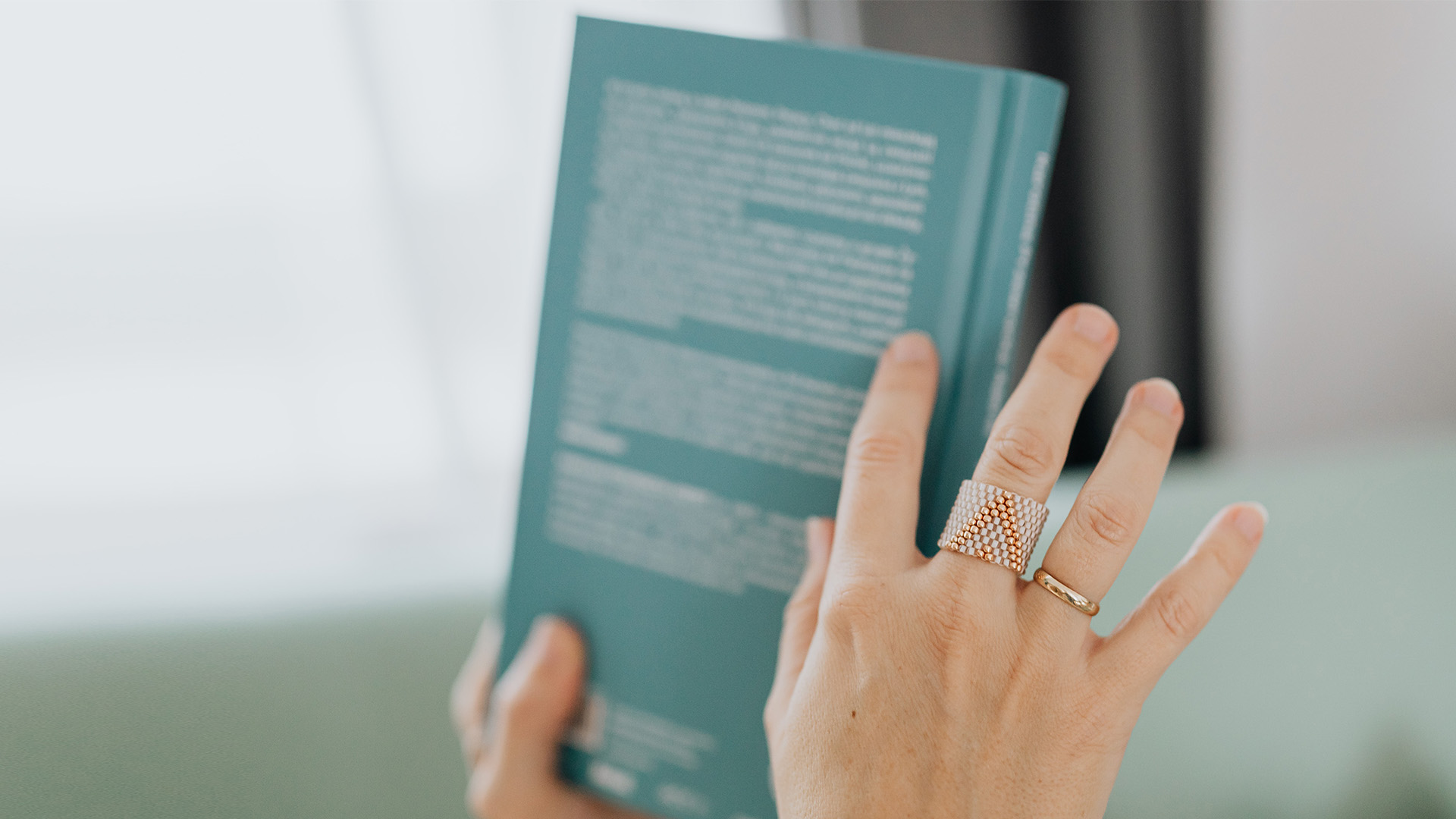How to write a blurb for your book
Learning how to write a blurb is an art in and of itself. More than just summarizing what a book is all about, a blurb needs to grab readers’ attention, engage their interest, and compel them to further explore a book’s content—especially when they’re reading more books and picking between a few. For authors, writing a strong, descriptive blurb is one of the most important and powerful selling points for a book.
Not just limited to selling hardcopy titles in an indie bookstore, blurbs play a vital role in sales of ebooks and digital publications as well. Blurbs have become necessary even for web-based content, like long-form blogs, articles, web pages, and book reviews.
While the evolution of blurbs extends to many facets of creative writing, we’ll focus specifically on books and help you learn how to write alluring blurbs that move and inspire prospective readers. But before we get into the nuts and bolts of blurb writing, let’s grasp the full meaning behind blurbs and what they do.
What is a blurb?
As the persuasive summary of any book, film, or creative work, a blurb is a short promotional description. Blurbs typically appear on the back cover of printed books and are intended to encourage readers to buy into the book. For ebooks and digital publications, you’ll usually find a blurb after the main cover image or used as the product description in an online bookstore.
Compelling blurbs employ a mindful balance of promotion, psychology, and creativity to highlight the core of a book’s contents without revealing too much information. Think of it as a sales pitch that reels in readers by invoking a sense of interest and curiosity. Blurbs can also include short snippets about the author or quotes and testimonials from acclaimed readers and critics. In short, there are no hard rules for writing book blurbs. But some practices can help sharpen your blurb artistry.
One challenge you may face in writing a book blurb is length. While there’s no concrete best practice for blurb length, the rule of thumb is to target between 100 and 200 words, with a rough average of 150 words for back cover book blurbs. However, some blurbs can be as few as 50 words and others as long as 250+ words. It largely depends on the nature of the book, your audience, and how much space you have to write.
Tips for writing a compelling book blurb
Several practices can help leverage your blurb as an effective lure. Check out these tips to elevate your blurb writing skills and make your book all the more successful.

1. Align tone with your book and genre
One of the most important aspects of writing a great blurb is appropriately reflecting your book’s tone. If it’s a fiction drama or romance novel, it likely will feel touching, harrowing, and emotional. But if it’s a non-fiction self-help book, your blurb might have a more candid and conversational tone that’s sharp and articulate. Just as aligning your blurb with your book’s tone, matching your blurb’s tone with your book’s genre is critical to sending the right signals and resonating with your audience.
It can be helpful to read blurb examples to get inspired—like the ones at the end of this article. Research blurbs from bestselling (and less popular) books in your genre, too. Take note of the elements that draw you in, word choices that resonate, and blurb formulas that work. This can also provide ideas on structure, flow, and blurb length.
2. Make your opening line count
The opening line of your blurb serves as your first impression. Short, pithy, surprising sentences or jaw-dropping facts will grab the reader’s attention. It’s not a bad idea to lead with your most outrageous claim. We’re not suggesting you make something up, but a clever use of words to create a need-to-know urgency in your reader never hurts.

3. Structure your blurb effectively
When crafting the perfect blurb for your book, a few vital structural elements should be followed.
- Hook: Determine what’s most compelling and interesting about your book and capture that in the first couple of sentences. The hook should immediately grab the reader’s attention and provide a unique perspective about what your book entails.
- Character: Common across fiction book blurbs, you’ll notice they give readers an enticing sense of who the main characters are. All you need to convey is a brief hint of their personality.
- Conflict: Critical for fiction novels, be sure to share a taste of the underlying conflict driving the story without giving too much away. You want to leave the reader craving more.
Use these components as a guide to writing a blurb that provides substance and intrigue but also has a cliffhanger effect of motivating readers to want to learn more.
4. Share your subject matter expertise
Depending on the type of book you’re self-publishing, it’s also good practice to highlight your experience or successes in the world you’re writing about. It doesn’t have to be more than one sentence, but many authors will reference their book-writing or professional status as it relates to the book.
When you take a look at the blurb examples at the end, you’ll note that most blurbs speak about the author in the third person. So if you’re writing your own, be sure to do the same!
5. Maintain a consistent voice
Your blurb should be written in the same voice as your book. This sounds like obvious advice, but you’d be shocked to know how many writers miss this mark.
A potential reader looks at the blurb the same way they would look at the book itself. In a non-fiction book, you sell your knowledge, writing, and yourself. In a collection of short stories, you’re selling your writing abilities and plot lines.
If the blurb doesn’t represent the typical language you use in your book, the reader will feel a disconnect when they open it to page one. Besides, writing like yourself will only make your words more authentic and impactful.
6. Avoid clichés and overused lines
Openers like “In a world,” “Unlike most people,” and “I always told myself that,” have become overused clichés that you should avoid when writing your book blurb. Clichés are previously-written phrases that have become so popular they’ve lost their impact. Strive for originality and minimize overused lines, not just in your blurbs but in your writing in general.

7. Edit, edit, edit
Remember, blurb writing is an art form. While it feels like it should be relatively easy to write a 150-word blurb when compared to a full book, you shouldn’t expect it to happen quickly. As with any kind of writing, blurb-building requires editing and revisions.
Check for typos and grammar errors as well as unnecessary content that can be cut. You want your blurb short, sweet, and impactful!
Then, once you feel happy with your blurb, have someone else take a look at it for grammar, clarity, interest, and tone. Try sharing it with people who haven’t read your book, too. This will help you to understand if they immediately get what your blurb is trying to convey—and if they’d consider flipping to chapter one.
Book blurb examples and anatomy
While there’s no perfect formula for writing the best blurb for your novel, some patterns are worth noting. Look at the blurb examples below and take notes on how they grab their readers and reel them in.
Blurb Example #1: Kiss Me Like This by Bella Andre
This is an exemplary model of a well-structured fiction blurb that introduces the romance novel’s main characters, the hook, and the drama-charged conflict that sparks the book’s emotions and allure. The tone and word choice are on-point with the novel’s genre, and the blurb leaves readers wanting more. Plus, the author’s accolades are mentioned at the top, so readers don’t have to worry about the writing style.
From New York Times and USA Today bestselling author, Bella Andre, comes a New Adult contemporary series about The Morrisons!
Sean Morrison, one of six siblings and the top college baseball player in the country, is reeling from a heartbreakingly painful loss. Nothing seems to matter anymore … until the night Serena Britten unexpectedly ends up in his arms.
Serena is a world-famous model who has only ever wanted to be normal, even though her mother has always pushed her to become a superstar. Though it isn’t easy to try to leave everyone and everything she knows behind, Serena is determined to enroll in college. More than anything, she wants to turn her love for books into a new career that she actually loves. Only she never expected to meet someone like Sean on campus—or to be instantly consumed by their incredible chemistry and connection.
But when the pressures of her high-profile modeling career only get bigger and more demanding, will it make living a normal life as a college student–and falling in love with the hottest guy on campus—impossible?
Blurb Example #2: Deskbound: Standing Up to a Sitting World by Kelly Starrett
Using a subtle yet powerful opener that resonates with just about anyone confined to a chair for several hours of the day, this non-fiction blurb helps readers reshape their perception of one of the most fundamental human positions: sitting. Starrett, who seamlessly underlines his credibility as a subject-matter expert on the topic, hits all of the pain points while alluding to the potential solutions readers can expect when they delve into the book.
Sitting can wreak havoc on your health, and not just in the form of minor aches and pains. Recent studies show that too much sitting contributes to a host of diseases—from obesity and diabetes to cancer and depression. The typical seated office worker suffers from more musculoskeletal injuries than those workers who do daily manual labor. It turns out that sitting is as much an occupational risk as lifting heavy weights on the job. The facts are in: sitting literally shortens your life. Your chair is your enemy, and it is murdering your body.
In this groundbreaking new book, Dr. Kelly Starrett—renowned physical therapist and author of the New York Times and Wall Street Journal bestseller Becoming a Supple Leopard—unveils a detailed battle plan for surviving our chair-centric society. Deskbound provides creative solutions for reducing the amount of time you spend perched on your backside, as well as strategies for transforming your desk into a dynamic, active workstation that can improve your life. You will learn how to:
- Easily identify and fix toxic body positions
- Eradicate back, neck, and shoulder pain
- Mitigate carpel tunnel syndrome forever
- Organize and stabilize your spine and trunk
- Walk, hinge, squat, and carry with peak skill
- Perform daily body maintenance work using fourteen mobility templates for resolving pain and increasing range of motion
Whether your goal is to maximize your performance in or out of the workplace, lose weight, or simply live pain-free, Deskbound will work for you. It is a revolutionary cure for death-by-desk.
Blurb Example #3: The Goldfinch by Donna Tart
In this gripping fiction novel blurb, Tartt wastes no time introducing the main character in his youth and sharing the isolating hardships that challenged his upbringing. Packing a full story in just a few punchy sentences, this eyebrow-raising blurb stokes the reader’s interest while leaving a lot on the table. Tartt’s poetic tone is intoxicating and warming, making The Goldfinch an inviting read for anyone looking to detach from their own reality and explore what life is like in the character’s shoes.
WINNER OF THE PULITZER PRIZE. Theo Decker, a 13-year-old New Yorker, miraculously survives an accident that kills his mother. Abandoned by his father, Theo is taken in by the family of a wealthy friend. Bewildered by his strange new home on Park Avenue, disturbed by schoolmates who don’t know how to talk to him, and tormented above all by his longing for his mother, he clings to the one thing that reminds him of her: a small, mysteriously captivating painting that ultimately draws Theo into the underworld of art.
As an adult, Theo moves silkily between the drawing rooms of the rich and the dusty labyrinth of an antiques store where he works. He is alienated and in love—and at the center of a narrowing, ever more dangerous circle.
The Goldfinch is a mesmerizing, stay-up-all-night and tell-all-your-friends triumph, an old-fashioned story of loss and obsession, survival and self-invention, and the ruthless machinations of fate.
Blurb Example #4: Can’t Hurt Me by David Goggins
This autobiography blurb from one of the world’s most disciplined men, David Goggins, sums up his transformation story in just two sentences, solidifying his succinct, no-nonsense attitude. He checks all the boxes establishing his credibility and accolades, which validate the legitimacy behind his book. The tail-end of the blurb effectively dangles a carrot for hardwired Type A personalities who want to get inside his mind.
For David Goggins, childhood was a nightmare—poverty, prejudice, and physical abuse colored his days and haunted his nights. But through self-discipline, mental toughness, and hard work, Goggins transformed himself from a depressed, overweight young man with no future into a U.S. Armed Forces icon and one of the world’s top endurance athletes. The only man in history to complete elite training as a Navy SEAL, Army Ranger, and Air Force Tactical Air Controller, he went on to set records in numerous endurance events, inspiring Outside magazine to name him “The Fittest (Real) Man in America.”
In Can’t Hurt Me, he shares his astonishing life story and reveals that most of us tap into only 40% of our capabilities. Goggins calls this The 40% Rule, and his story illuminates a path that anyone can follow to push past pain, demolish fear, and reach their full potential.
Blurb Example #5: The Psychology of Money by Morgan Housel
Author Morgan Housel is a creative wordsmith who proves that less is more in a concise 128-word blurb for this finance-meets-self-help book. Housel is punchy and conversational in writing, making for uber-efficient information transfer. The concept is approachable and relatable for just about anyone. With subtle clues highlighting his experience, the book blurb wraps by painting a clear picture of the structure of the book and what to expect.
Doing well with money isn’t necessarily about what you know. It’s about how you behave. And behavior is hard to teach, even to really smart people. Money—investing, personal finance, and business decisions—is typically taught as a math-based field, where data and formulas tell us exactly what to do. But in the real world, people don’t make financial decisions on a spreadsheet. They make them at the dinner table or in a meeting room, where personal history, your own unique view of the world, ego, pride, marketing, and odd incentives are scrambled together. In The Psychology of Money, award-winning author Morgan Housel shares 19 short stories exploring the strange ways people think about money and teaches you how to make better sense of one of life’s most important topics.
Bring your blurb to life
Whether you’re writing a novel or a short story, few selling tools are as critical as a solidly written blurb. Sure, the cover design creates intrigue. But, if you have caught a potential reader’s attention, the blurb is what will sell your book—and convert readers.
***
Are you ready to self-publish your book? Get started today!


This post doesn't have any comment. Be the first one!